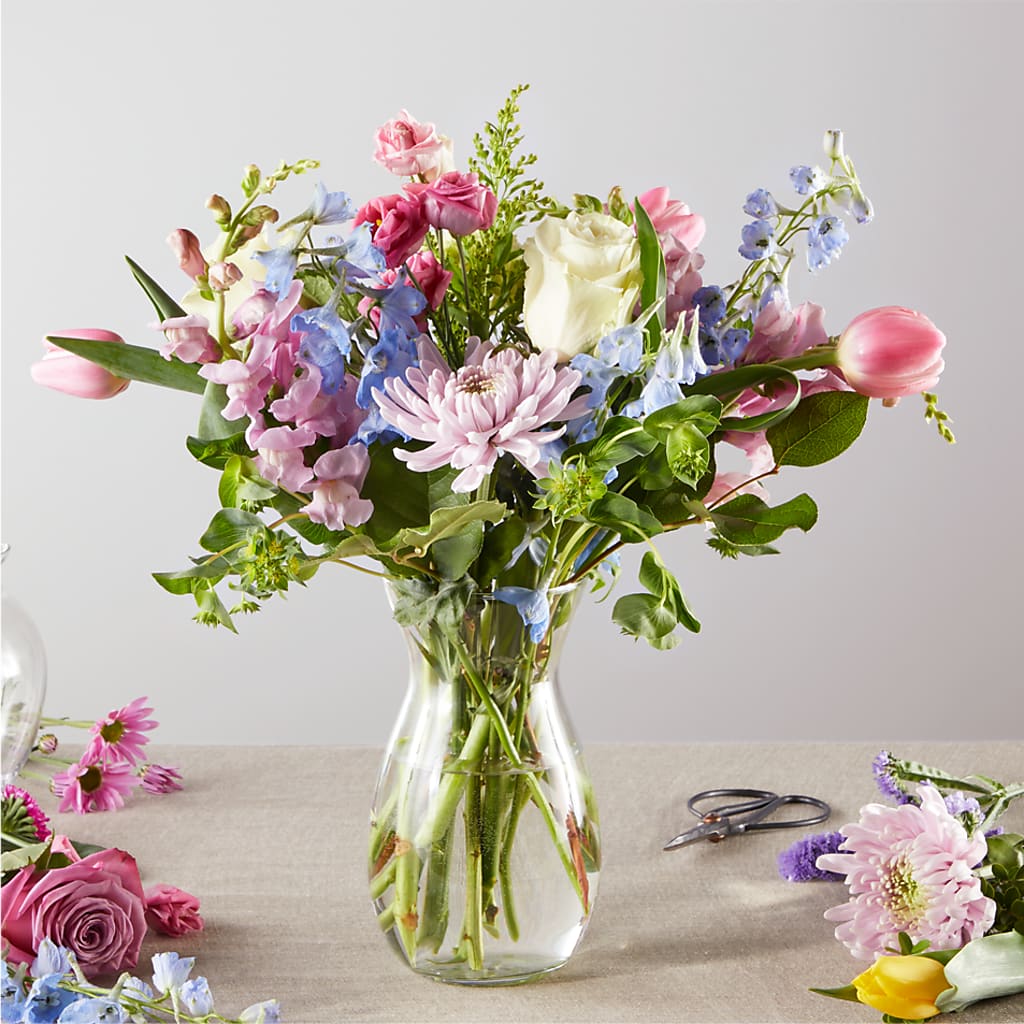Discover the Art of Floral Layout: Tips From Specialist Florists
Floral design is not simply an aesthetic endeavor; it is a nuanced art form based in principles such as balance, percentage, and contrast. Professional flower shops provide very useful understandings right into picking the suitable blossoms customized to specific occasions, ensuring that each arrangement resonates with its intended message.
Understanding Floral Design Principles
Usually overlooked by novice florists, recognizing the basic principles of flower layout is crucial for creating aesthetically attractive plans (florist lockhart). These concepts serve as the structure whereupon effective flower make-ups are built, making certain consistency and balance in each production
Balance refers to the circulation of visual weight within a plan, which can be symmetrical or unbalanced. Contrast, accomplished through differing colors, forms, and textures, includes passion and depth to the layout.

Rhythm overviews the visitor's eye with the plan, typically accomplished by repeating forms or shades. Unity makes sure that all elements of the style work together cohesively, creating a feeling of completeness. By grasping these concepts, floral designers can raise their work, changing simple arrangements right into stunning visual declarations.
Eventually, a strong understanding of these flower layout principles not just improves creativity however likewise cultivates a deeper admiration for the virtuosity involved in floral setups (florist lockhart). With technique and application, novice florists can create their abilities and create memorable designs
Choosing the Right Flowers
Picking the proper blossoms is an essential step in the flower layout process, straight affecting the general visual and efficiency of the plan. To start, take into consideration the event; various occasions require distinct flower types. For instance, romantic settings may gain from roses, while cheerful celebrations might suit sunflowers or gerbera sissies.
Utilize a color wheel to identify corresponding or similar color schemes that can create a natural look. In addition, take into consideration the period; seasonal flowers not just make certain freshness however also often come at a lower expense, making them a useful selection.
Another important variable is the intended long life of the arrangement. By attentively choosing flowers, you can develop setups that resonate with their desired purpose and target market.
Strategies for Plan

Another reliable technique is the "line style," which stresses the natural lines and shapes of the blossoms. By utilizing long-stemmed blooms, designers can develop a feeling of activity and flow in the plan, attracting the eye along the lines developed by the stems. Additionally, integrating varying elevations in the arrangement adds depth and interest, enabling the customer to check out the item from different angles.
The "shade stopping" method is additionally valuable, where shades are grouped together to create vibrant aesthetic declarations. This approach can stimulate details feelings and set the state of mind of the arrangement. Lastly, do not forget the importance of adverse room; leaving gaps within the plan allows for breathing space, enhancing the overall aesthetic and protecting against congestion. Proficiency of these methods will certainly boost your flower style abilities.

Seasonal Floral Inspirations
Incorporating seasonal aspects into floral styles can greatly improve their charm and relevance. By straightening floral plans with the changing seasons, floral designers can evoke specific state of minds, themes, and colors that resonate with customers and the atmosphere. Each period supplies a distinct scheme of blooms and foliage that enables for creativity and inspiration.
In spring, think about the fragile charm of tulips, daffodils, and cherry blossoms, which embody revival and vibrancy. Summer season lends itself to bold tones and rich structures with sunflowers, peonies, and zinnias, Recommended Site celebrating abundance. Autumn's abundant tones can be captured with dahlias, chrysanthemums, and decorative yards, creating cozy, inviting setups that mirror the harvest. Wintertime offers a calm visual with evergreens, amaryllis, and seasonal berries, excellent for stimulating a sense of tranquility and festivity.
Taking Care Of Your Plans
Taking care of floral plans is crucial to keep their appeal and longevity. Correct treatment makes sure that your blossoms stay lively and fresh, enhancing the aesthetic appeal of your room. Begin by positioning your plan in an amazing area, away from straight sunlight and drafts, as severe temperature levels can create wilting and staining.
Routinely examine the water level in the flower holder, guaranteeing it is enough to cover the stems sufficiently. Change the water every couple of days to stop microbial growth, which can reduce the lifespan of your plan.
Furthermore, think about the kind of flowers in your setup; some might need specific care. Avoid placing your arrangements near ripening try this web-site fruit, as ethylene gas can speed up wilting.

Conclusion
Finally, grasping the art of flower layout entails a detailed understanding of fundamental concepts, cautious option of flowers, and the application of reliable setup methods. Seasonal inspirations additionally enhance recommended you read creativity, while appropriate care makes sure that floral displays preserve their beauty and durability. By incorporating these components, individuals can produce impactful setups that convey emotion and offer their intended function, ultimately improving the experience of both the developer and the recipient.